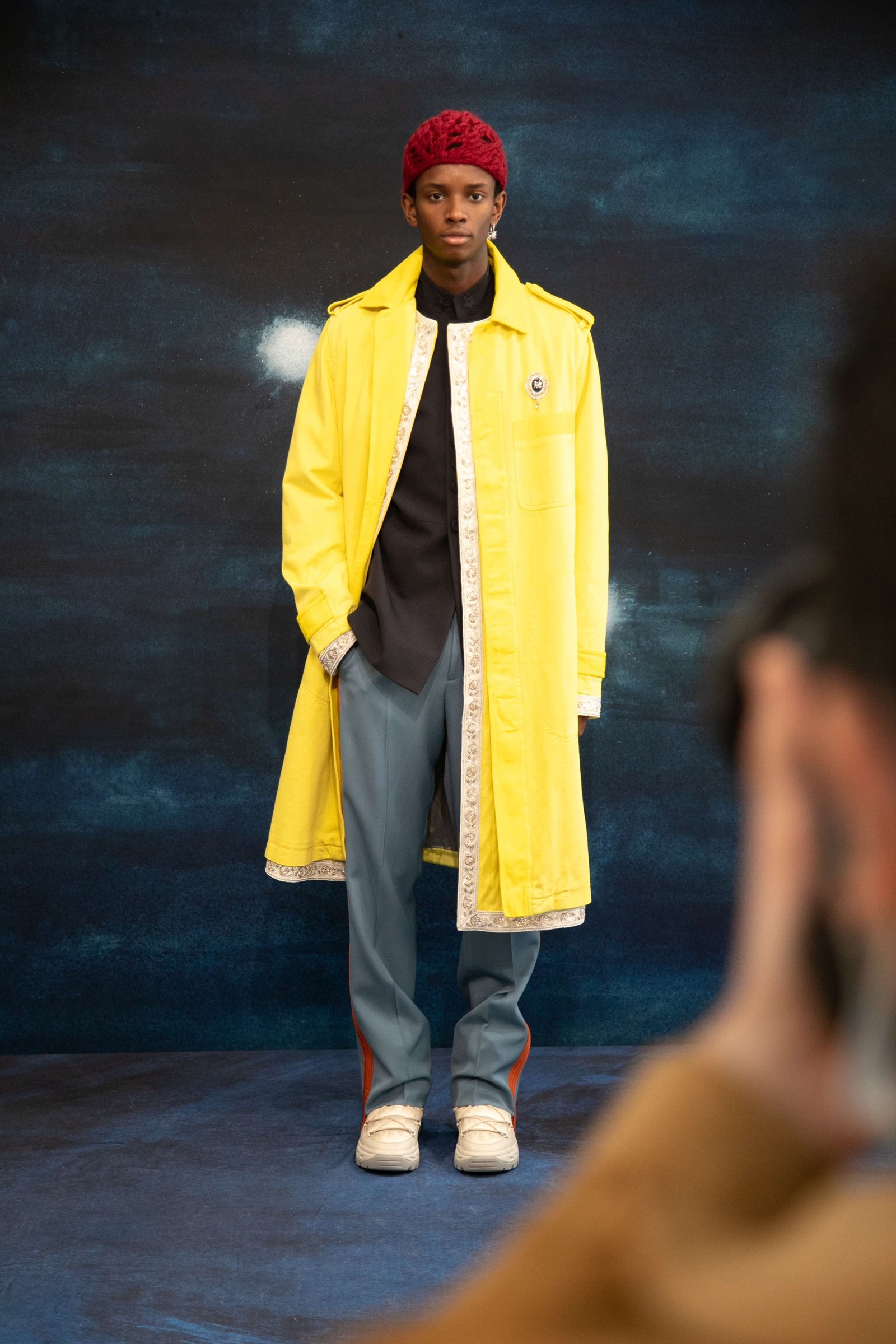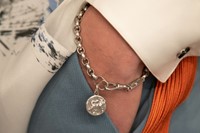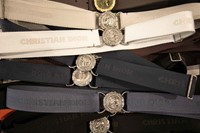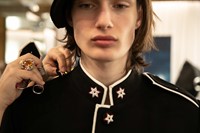The paintings of Peter Doig, the acclaimed Scottish-born, Trinidad-based artist, have broken auction records for works by a living European artist. To talk about that maybe feels like the story Fran Lebowitz tells, of someone putting their elbow through a Picasso painting that nobody knows the name of, but that everyone knows is worth $139 million. But it does contextualise Doig’s standing for the uninitiated: he’s probably the world’s most important and renowned figurative artist.
In an art context, figurative means forms that are recognisably derived from life. Which leads us to fashion – something for living in and living with, something real. Especially as practiced by Kim Jones, men’s artistic director of Dior, who has cannily coupled together his wild creative instincts with innate and luxurious desirability. He also decided to collaborate with Doig for his Autumn/Winter 2021 collection – “Dior Doig” was the pithy, witty turn-of-phrase to describe a season conceived entirely in partnership.
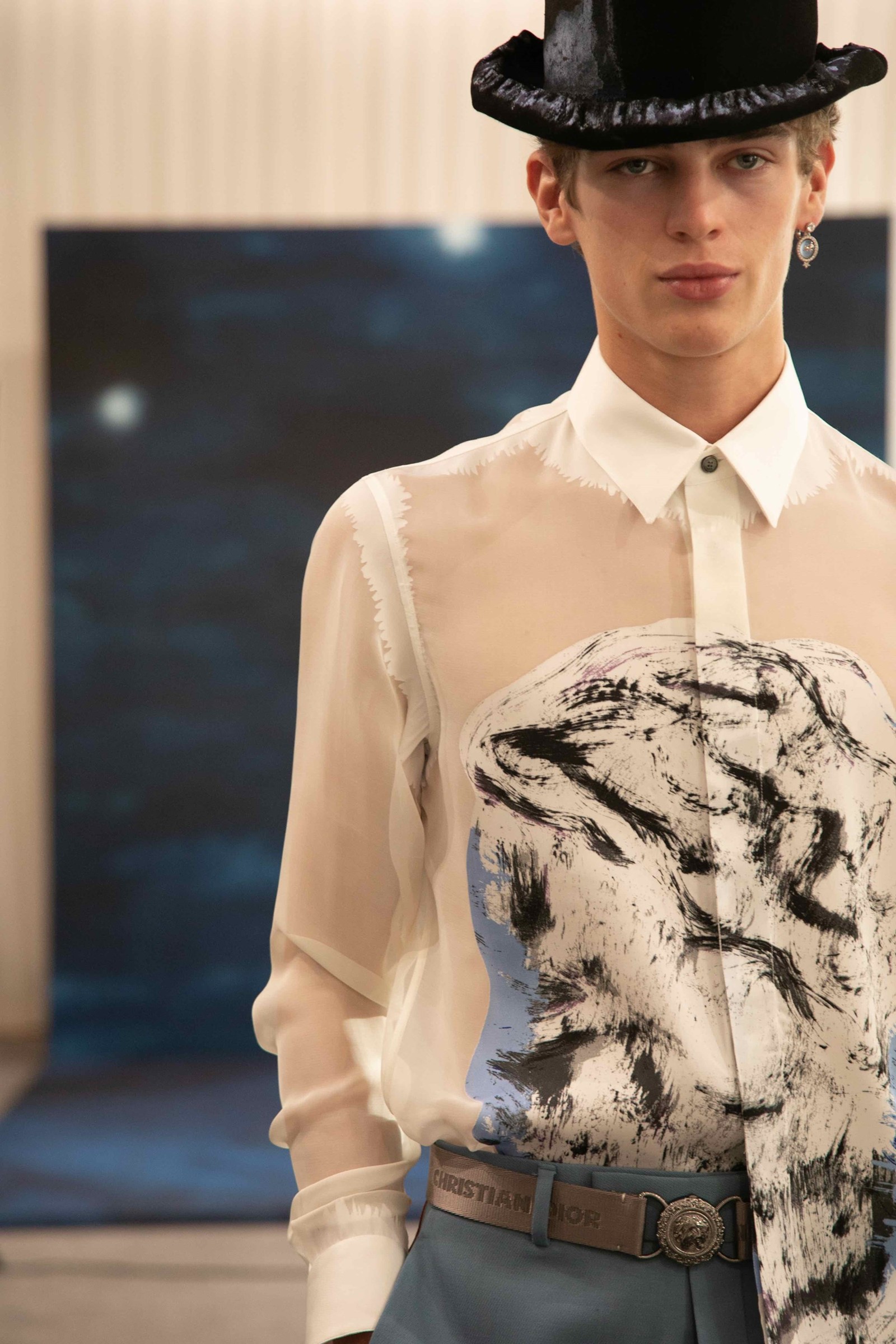

“The collection came from talking to Peter Doig, from looking at his work,” said Jones. If there is always an affinity – a fandom – found in his artistic collaborations at Dior, this has a particular intimacy akin to his homage to Judy Blame last year. Doig studied at Saint Martins in the 1980s; Jones did so in the 1990s – back then, at the original building on Charing Cross Road, fine art and fashion students shared a building, working side-by-side. Doig was embedded in the vibrant London art and fashion scene of the 1980s too, one Jones has long-admired. Doig’s experience includes friendships with the defining figures of the period, such as the artist Leigh Bowery and the BodyMap designers Stevie Stewart and David Holah (Doig’s former wife, Bernadette “Bonnie” Kennedy, worked for the latter). It was, perhaps, inevitable that the two should meet.
Shown in Paris to a global digital audience, Jones’ Autumn/Winter menswear show demonstrated the depth and breadth of their affinity. Doig was present in the Dior studio for all fittings and development of the collection (as seen in exclusive pictures, shown here), and the colours of the collection were matched to his own paint pigments. A number of outfits precisely reproduced figures seen in his paintings – “to turn ideas and dreams into colour, and functional forms,” Doig himself wrote. Compare look number 14 – an unusual outfit of multicoloured, abstractly animal-patterned sweater topped with a wrestling helmet – to the leftmost figure in Two Trees (2017), held in the Metropolitan Museum of Art collection. They’re one and the same. That wrestling helmet – like all Dior’s hats – were created by Stephen Jones, an old friend of Doig from that febrile London club scene: a number have been hand-painted by the artist himself. Expect frenzied bidding when – and if – they ever come to market.
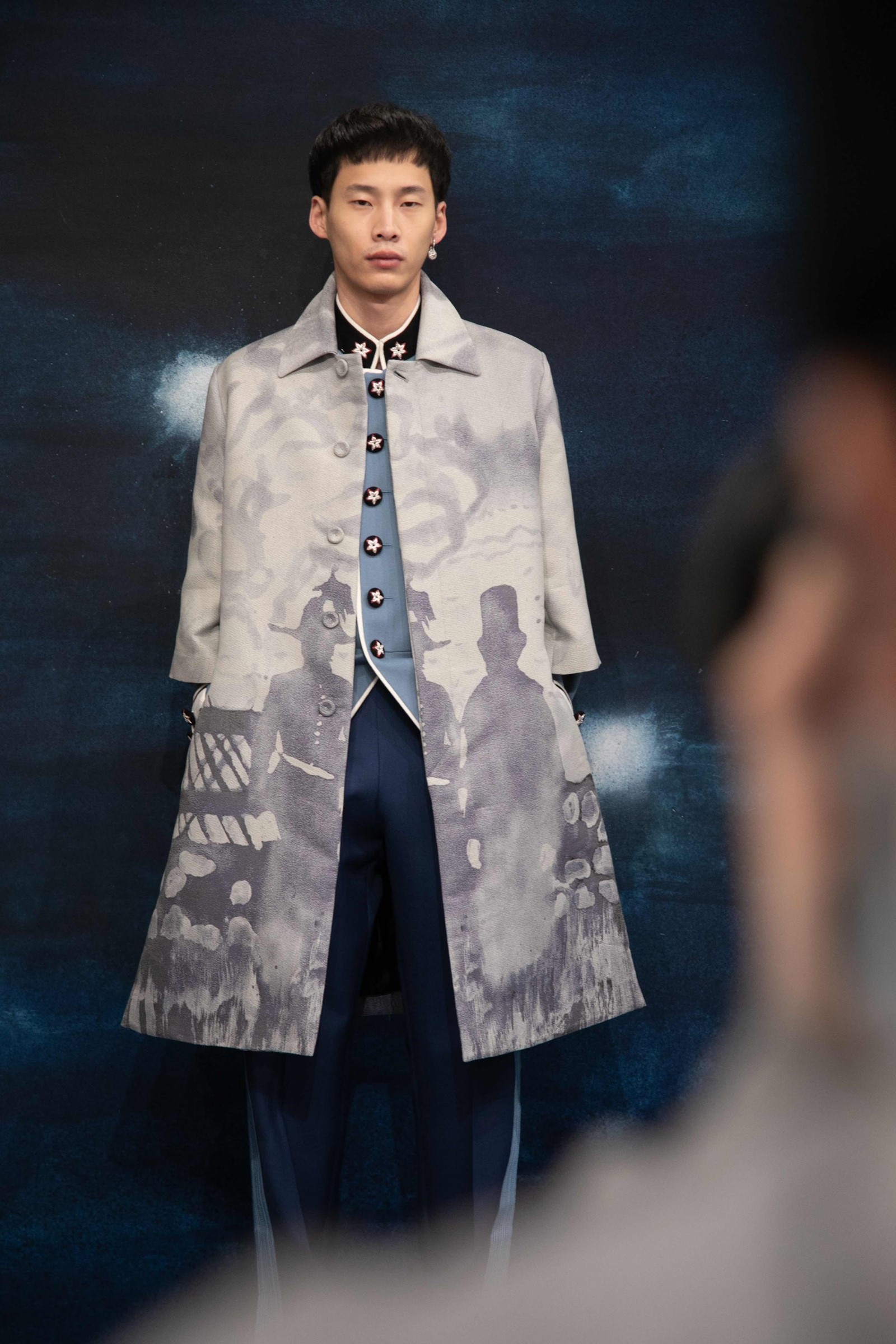
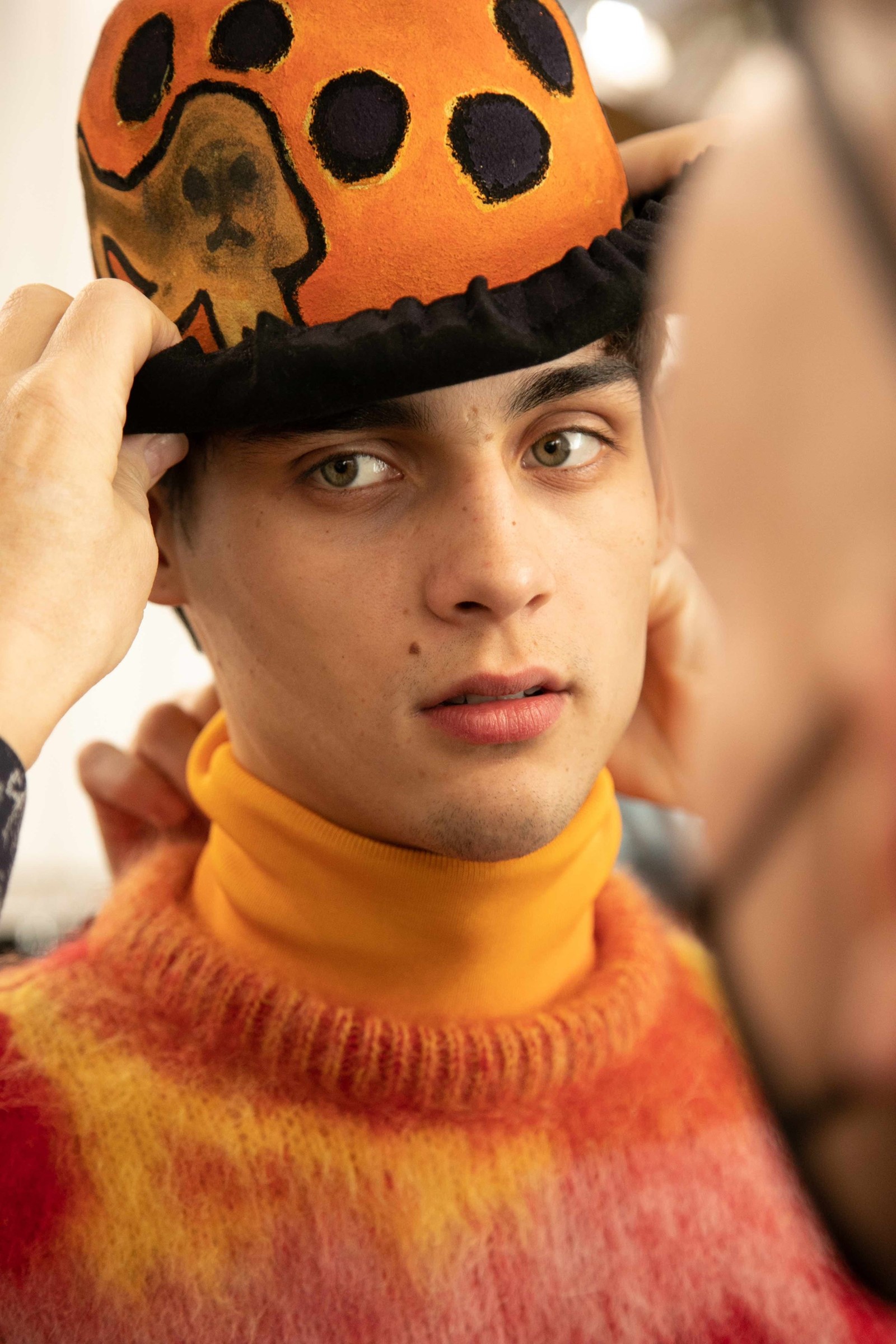
There were unexpected synergies too: Doig co-curated an exhibition of portraits in Berlin with the writer Hilton Als. He selected a pair of Christian Bérard paintings – on the reverse was written “Collection of Christian Dior”: prior to fashion, Dior was for some years a gallerist, and exhibited Bérard’s work. And the lions that prowl through some of Doig’s paintings found reflection in a masquerade costume created for Christian Dior in 1949: he went as the king of the jungle (incidentally, the costume was devised by the later Pierre Cardin, a tailor at Dior who cut the prototypes Bar jacket before founding his own couture maison). Doig painted Dior in that costume, and it became the graphic of the invite. And Doig’s time at Saint Martins coincided with that of John Galliano, Dior’s former artistic director who, 20 years ago, purchased a chunk of Kim Jones’ graduation collection. Jones revisited a frogged and braided jacket from that show here – “my own history, my own heritage,” Jones said. He updated it with the five-pointed star of Dior patterned into the braiding. It all links with Doig, who while a part-time dresser at the English National Opera, used to dress up in costumes between shows. Connect, connect, connect.
Of course, that’s part of the job for an artistic director at a historic house such as Dior: crafting future archives, a history-to-come. Jones now has the challenge twofold: he debuts his first haute couture collection for Fendi on Wednesday, 27 January. Christian Dior himself used to call the most significant models of his collection ‘Trafalgars.’ “It is these models which determine the fashion of today, and also that of tomorrow,” he wrote. Jones has always had an eye on tomorrow – which is tricky, in the current world climate. Which is why, perhaps, he told me his collection was about “ceremonial dress taken into everyday life.” The ceremony of the everyday, indeed – the idea that, pretty soon, we’ll all want to dress up for any and every everyday activity like, perhaps, never before. That feels prescient, powerful, and seductive.
